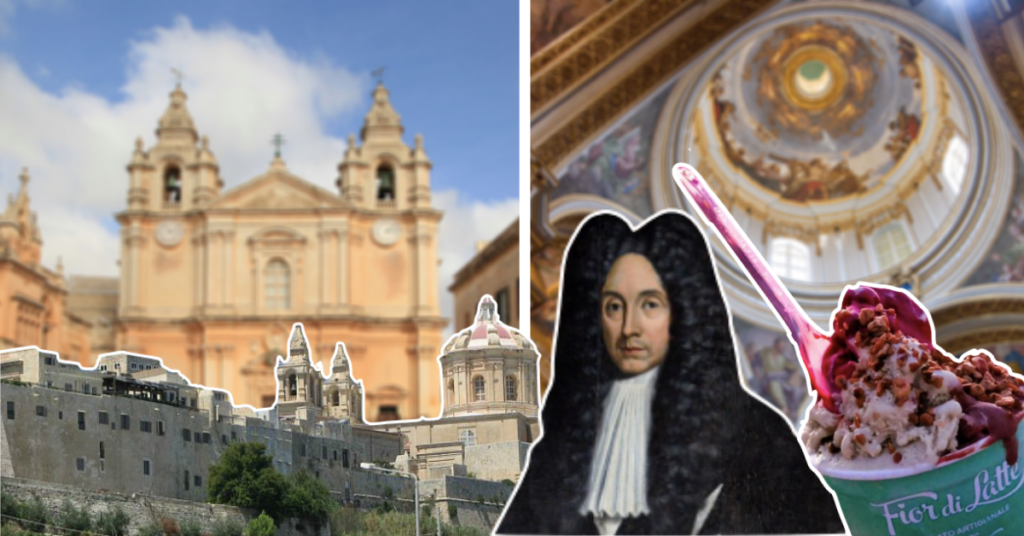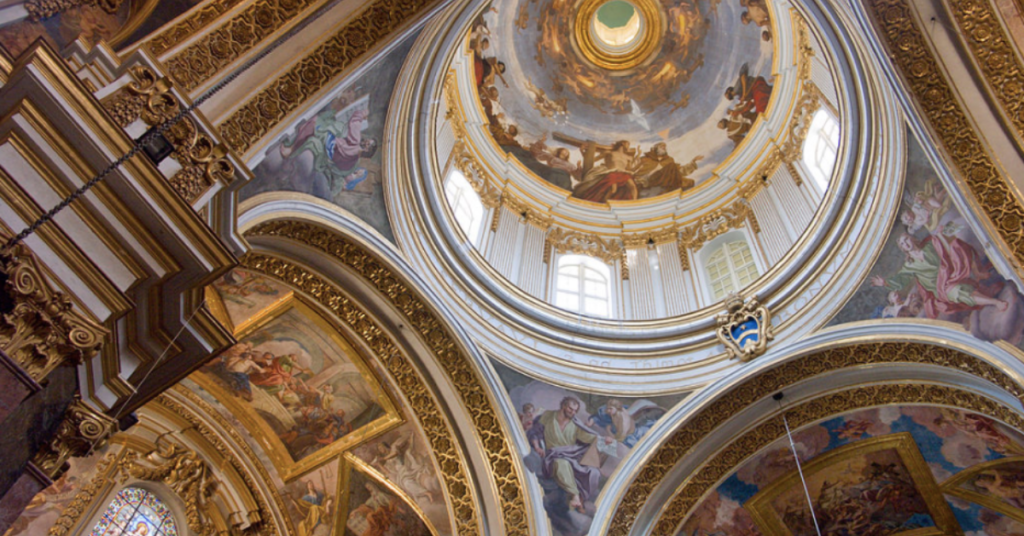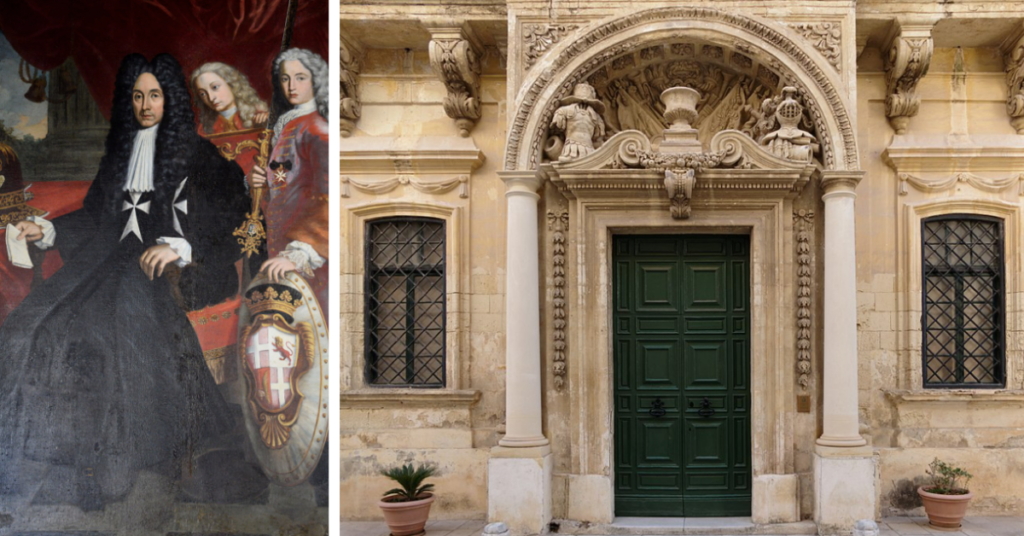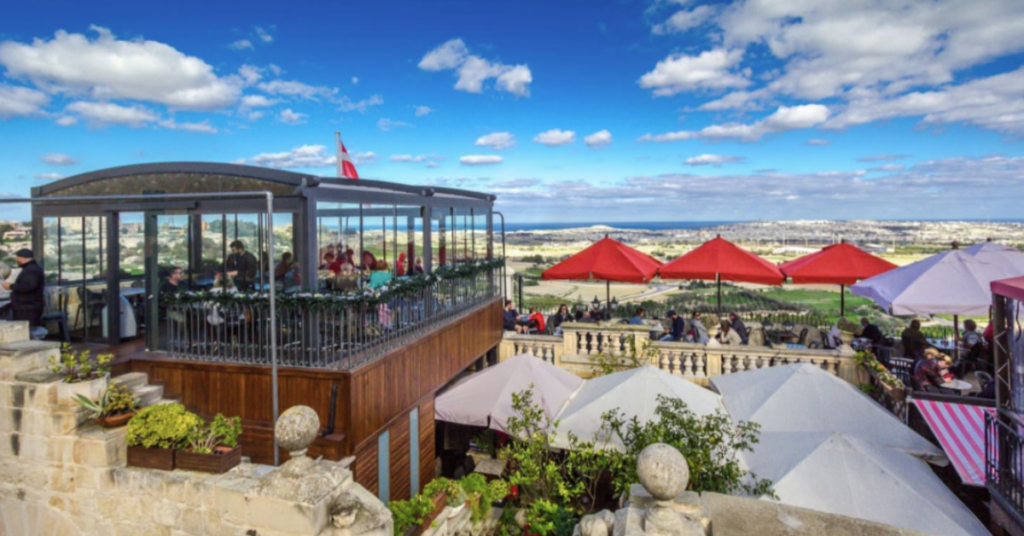CITY SPOTLIGHT: Malta’s Silent City Boasts Some Of The Country’s Best Architecture, Sights, And Bites

Mdina attracts hundreds of thousands of tourists year after year – and with good reason.
From some of the best food on the island to historical artefacts offering priceless insight into Malta’s history, Mdina has proved to be a cultural, historical, and culinary hub.
That’s why we’ve taken it upon ourselves to list down some of the most important sights and bites that Malta’s very own Silent City has to offer. Here we go!
The Gem
Mdina’s St Paul’s Cathedral is one of the only Roman Catholic churches in Malta that boasts the title of ‘cathedral’, and you’ll soon see why.
Founded way back in the 12th century, tradition has it that Saint Paul’s Cathedral stands on the spot where St Publius met St Paul after he was left shipwrecked in Malta.
It is said that prior to the cathedral being built, its site was occupied by St Publius’ palace – and whilst archaeologists and historians do not support this belief, the remains of a Roman house were found in the cathedral’s crypt.

Interestingly enough, the cathedral that currently stands isn’t the original one.
In 1693, an earthquake damaged the original cathedral so much that it had to be dismantled and rebuilt. The new cathedral was designed by legendary Maltese architect Lorenzo Gafa and was built over a period of nine years, from 1696 to 1705.
The cathedral has become synonymous with the Mdina skyline, what with its sky-high bell towers and octagonal dome, but its interior is home to a plethora of riches and historical artefacts.
For starters, most of the cathedral’s floor is made up of tombstones or commemorative marble slabs. Underneath, one can find the remains of bishops, canons, and laymen from noble families.

If you look up, you’ll get to see a flurry of frescoes depicting the life of St Paul. These were painted by three Sicilian painters – Vincenzo, Antonio, and Francesco Manno.
The cathedral also contains a few remnants of the cathedral which stood before the 1693 earthquake.
These include a baptismal font dating back to 1495, the cathedral’s main door, crafted in 1530, as well as some choir stalls from the 1400s.
The History
Alongside Valletta, Mdina’s hands down one of the country’s historical hubs – and with good reason.
Having been founded by the Phoenicians way back in the 8th century, Mdina, previously known as Maleth and later, Melite, served as Malta’s capital city up until the arrival of the Knights of St John in 1530.
Mdina has a long history and has served as a safe haven for residents since prehistoric times.

Credit: Malta Guide
By the Bronze Age, the plateau on which the Mdina we know and love is built had become a place of refuge for Malta’s ancient residents.
When the Phoenicians then colonised Malta in the 8th century, they founded Maleth on that very same plateau. Fast forward a couple of years, to 218 BC, Malta, and thus Mdina, was taken over by the Romans. These colonisers changed Maleth’s name to Melite. At the time, Mdina was three times the size that it is today.
Tradition has it that the Apostle St Paul resided in Mdina in the year 60 AD, after being shipwrecked in Malta.
After the fall of the Western Roman Empire, a fortification was built around Mdina, bringing its size down to what it is today. The purpose of this was to make the city easier to defend.
Let’s fast forward to the 16th century when the Knights of St John took over Malta…

The Order chose to settle down in Birgu, a choice which led to Mdina losing its status as capital city. Having said that, Mdina was still a relevant city throughout the Knights’ rule.
During the Great Siege, Mdina served as the base for the Knights’ cavalry, having undergone a fortification upgrade a few years prior. Mdina’s defences were upgraded yet another time in the 17th century, when the De Redin Bastion was built.
In 1693, an earthquake led to Mdina’s Cathedral of St Paul getting partially destroyed. This was however rebuilt over the span of six years soon after.
The city enjoyed a full-on restoration in 1722, when Malta was under the rule of Grand Master de Vilhena. Mdina’s restoration was entrusted to French architect Charles Francois de Mondion, whose Baroque influence can still be seen to this day.

This legendary restoration also saw the construction of Palazzo Vilhena, the Banca Giuratale, Corte Capitanale, and the new Mdina Gate.
Presently, Mdina hosts a population of just under 300 residents. Having said that, the Silent City attracts about 750,000 tourists a year.
The Feast
Despite being so tiny, Mdina celebrates all of Malta’s three patron saints – St Peter, St Paul, and Our Lady of Mount Carmel.
Technically therefore, Mdina celebrates three separate feasts. On 26th January, the town celebrates the Conversion of St Paul, on 29th June, it celebrates St Peter and St Paul, better known as l-Imnarja, and on the fourth Sunday of July, it celebrates Our Lady of Mount Carmel.

Having said that, the feasts don’t entail much extravagance outside of the church doors. Mdina’s minute population means that the town doesn’t have its own band club – the organisation most often responsible for feast-related celebrations.
The Food
When it comes to cuisine, few places are as versatile as Mdina. Whether you’re craving a slice of cake, a quick bite, or a full-on tasting menu, there’s a Mdina eatery ready to satisfy you.
Let’s start off with the one restaurant/cafeteria pretty much every Maltese person knows about – Fontanella.

Offering a huge selection of decadent cakes, traditional snacks, and full meals, Mdina’s Fontanella Tea Garden has become synonymous with its gorgeous view. This place is a must-visit for any tourist (or local) looking to get an unadulterated view of the island over a sweet bite.
Bet you didn’t expect to find an ice cream shop bang in the middle of such a historic city…

Situated in Villegaignon Street, Fior Di Latte is often considered to serve some of the island’s best ice cream. This tiny eatery serves sixteen delicious ice creams made using only the best ingredients. If you’d rather stay off lactose, worry not, because this spot’s also got a healthy range of dairy-free flavours. Refreshing!
Last but surely not least, if you’re looking to celebrate a really special occasion, do yourself a favour and book a table at the locally-renowned De Mondion.

This Michelin star-winning restaurant boasts a simple yet downright decadent menu. From the finest of meats to the creamiest of cheeses, De Mondion will introduce you to some of the best food you’ve ever tasted. If you want to get a taste of everything, then make sure to check out the restaurant’s tasting menus.
The Trails
Thanks to its sheer size, you can walk around the entirety of Mdina in a matter of hours, if not minutes!
Having said that, here are a few sights you should keep an eye out for when setting out on a historic hike.
As soon as you enter Malta’s Silent City, you’ll be greeted by the iconic Mdina Gate. This dazzling piece of architecture was built back in 1724 by legendary French architect Charles Francoi de Mondion under the rule of Grand Master Antonio Manoel de Vilhena. This iconic sight even made an appearance in TV series Game of Thrones, where it represented one of the gates of the fictional city of ‘King’s Landing’.

Palazzo Vilhena, the home of Malta’s National Museum of Natural History, can be spotted shortly after entering Mdina. This historic building was designed by the same architect behind the Mdina Gate, and, as its name suggests, was commissioned by the Grand Master of the time – Antonio Manoel de Vilhena.
Further into Mdina, right next to the locally-renowned Cathedral of St Paul, you can find the Cathedral Museum. Having been built between 1733 and 1742, this building was a Seminary before being transformed into a museum. Presently, the Cathedral Museum houses secular and ecclesiastical items, as well as religious and profane artworks.

Credit: Malta Info Guide
After consuming a healthy dose of history, make your way up to Bastion Square to enjoy some awe-inspiring sights – you wouldn’t want to miss out on that.